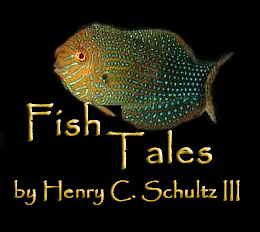
To Clean or Not to Clean: Gobiosoma Species
|
For September, I'll bring the genus Gobiosoma into the limelight. Also known as the Cleaner Gobies, a shroud of confusion sometimes hangs over this genus, most likely because of their common name. It is true that some of the gobies in Gobiosoma "clean," but not all of them do so. I'll attempt to explain the differences and the reasons for the confusion with nomenclature, as well as introduce you to some interesting little fish. Meet the Family From mud bottoms to rocky outcroppings, from open sandy bays to inside sponges and gorgonians, from the equator to the polar circle, from freshwater to marine environments, Gobiidae have truly conquered the water world. In fact, the Gobiidae family is the largest family of marine fish, consisting of over 2,000 species, yet, the members of this family are amongst the smallest of marine fish. Presumably, their overall range and size are two of the main reasons that new goby species are still being discovered on a regular basis. Most Gobiidae are characterized by a few notable attributes. Other than the few gobies that swim above the substrate, most lack a swim bladder and lateral line. However, gobies have sensory ducts around their heads that make up for the loss of the lateral line (Smith, Knopf, 1997). Another interesting characteristic is the ventral fins, which in most gobies have joined as one and developed small suction cups on the end. Also, every goby is a demersal spawner with most species having both parents acting as guardians over the eggs (Smith, Knopf, 1997). Some gobies will even produce sounds during courtship or territory disputes (CIBRA)! Among their most notable behaviors, however, are their symbiotic relationship with pistol shrimp, and the "cleaning" activities that some partake in. I'll leave the symbiotic relationship with shrimp for discussion in a future article and will instead concentrate on those "cleaners."
Gobiosoma species comprise a small fraction of the Family Gobiidae. Their exact classification is rather sketchy, and apparently is about to change. The currently recognized reference for Gobiosoma sp. is the only work that was ever published on this genus (Bohlke, Robins, 1968). It divided Gobiosoma into 5 subgenera (see below). This was rewritten and Elacatinus was elevated to a genus with Tigrigobius as a subgenus of Elacatinus and Gobiosoma was left with 3 subgenera: Aboma, Gobiolepis, and Gobiosoma (Hoese, 1971). This work was never published, and thus we cannot legitimately use it as a taxonomic reference. Unfortunately, it has been used on occasion, contributing to some of the confusion. Furthermore, as indicated above, this genus is about to be taxonomically revised (Van Tassell, pers. comm.). Once finally published, Elacatinus will be a valid genus without a subgenus, Tigrigobius will most likely be split into 2 genera, and Gobiosoma may or may not have a subgenus. There may also be 2 new genera: Aboma and Gobiolepis. Ginsburg (1939) originally placed Gobiolepis as a subgenus to Garmannia. In his unpublished thesis, Hoese later moved Gobiolepis as a subgenus from Garmannia to Gobiosoma and in the upcoming revision it may be raised to generic status (Van Tassell, pers. comm.).
The taxonomic classification is in a state of flux, not an uncommon occurrence for such a large and important family. Consequently, the reader will find many other variations in the classification of Gobiosoma, adding to the confusion when studying this genus. The classification chart above was the most current I could find.
In the Wild All Gobiosoma species hail from the Atlantic Ocean. They are geographically spread out, ranging from off the coast of New York to Northern South America. Depth seems to be unimportant in their distribution since they can be found from 3 feet down to 150 feet or deeper. The type of location where they can be found, however, seems to play an important role. The "non-cleaners" are usually located within tube sponges, and sometimes even small caves or crevices. The key word in the above statement was "within" since safety is their primary concern, and they generally like to stay out of harm's way. The "cleaners," on the other hand, can always be found in plain view. On a recent diving trip, I witnessed the vast majority of "cleaners" sitting on Montastraea spp. and Diploria spp. It is frequently on these corals that the "cleaners" set up shop, often called "cleaning stations."
By now I'm sure some of you are curious as to what all this talk of "cleaners" and "cleaning stations" is about. Simply put, the "cleaning" gobies remove, or "clean," ectoparasites from other fish, and in some cases dead skin, tissue, or scales. The "cleaning stations" are the locations of this community service that the gobies perform. The fish that the gobies "clean" are referred to as "clients." These "clients" approach the "cleaning stations" as needed, and in most cases, change color to some degree. Little research has gone into the exact reasons for the color change. However, many biologists believe it is either a signal that the "client" is ready to be "cleaned," or the change in color makes the ectoparasites more visible to the "cleaner." Once the cleaning begins, the "client" will often extend or stretch every fin and mouth. The dorsal fins are fully opened, gills flared, and mouth gaping open. The "cleaner" will search the entire "client," often times venturing into the mouth without fear of repercussion (DeLoach, 1999).
This is a form of a symbiotic relationship. The goby benefits by receiving a meal, while the "client" benefits with improved health. Since both partners benefit, this symbiotic relationship is known as "mutualism." For additional references, not listed below, that have more information on the symbiotic relationship betweens cleaner gobies and their clients, readers are encouraged to contact me directly. It is not fully understood if these cleaner gobies are obligate feeders of ectoparasites in the wild, as little research has gone into their diet. We do know, however, these "cleaners," much like their "non-cleaner" cousins, make excellent transitions into the home aquarium. In the Home Aquarium Utilizing traditional acclimation procedures will often times yield a successful transition. The recent increase in captive-bred specimens has most likely helped in this area. Facilities such as Ocean, Reefs, and Aquariums, Inc.(ORA) have made cleaner gobies regularly available at the wholesale level. The type and setting of the aquarium that suits Gobiosoma spp. will vary, depending on whether they are "cleaners" or "non-cleaners." "Cleaners" adapt well to most aquarium habitats. The horizontal stripe from head to tail is apparently an "international signal" for a cleaner fish, and thus even Indo-Pacific animals will not harm the Caribbean "cleaners." The main consideration concerning "cleaners" revolves around providing them with enough food. Despite being "cleaners," they do very well in home aquariums receiving traditional aquarium fish foods. The food, however, must be small enough to fit into their tiny mouth! Crushing small portions of the various flake foods, or pulverizing any of the frozen foods on the market is of paramount importance. Though predatory fish will most likely leave the "cleaners" alone, it is likely the "cleaners" will be unable to compete with the larger, more aggressive fish for food. Direct feeding may be necessary in tanks that have fish that are highly competitive during feeding time. An easy method of direct feeding is to use a turkey baster. Thaw or soak the fish food in a small portion of aquarium water, and suck the food into the baster. Using the baster, squirt the food in the direction of the waiting goby.
"Non-cleaners" are not as easy to care for. They lack the horizontal stripe, and in some cases they have vertical stripes. In other words, it is best for them to stay out of the sight of predators. In the home aquarium, this translates into keeping these Gobiosoma spp. in a very peaceful aquarium. Smaller aquariums may offer more viewing possibilities, and should also make it easier to ensure they receive enough food. Other small, non-threatening fish make excellent tank mates. In most cases, small fish like firefish (Nemateleotris spp.) will also assist in comforting your Gobiosoma sp., which often leads to more viewing time of the goby. Other Gobiosoma species, in this respect, are also quite helpful in re-assuring one another. Smallwood and Jeffery (1997) have noted that up to 40 or more different Gobiosoma species will live together within a square meter. I have successfully kept 10 Gobiosoma sp. (2 G. (Elacatinus) oceanops, 4 G. (Tigrigobius) puncticulatum, 4 G. (Tigrigobius) multifasciatum) together in a 29 gallon aquarium.
One last consideration for both "cleaners" and "non-cleaners" is removal of any predatory crustaceans. Large crabs, lobsters, and mantis shrimp should not be present in a Gobiosoma sp. aquarium. These ambush style predators will make quick work of the small gobies. Compatibility chart for the “non-cleaning” members of the genus Gobiosoma
Note: While many of the fish listed are good tank mates for the “non-cleaning members” of the genus Gobiosoma, you should research each fish individually before adding it to your aquarium. Some of the fish mentioned are better left in the ocean or for advanced aquarists. Captive Reproduction Spawning of Gobiosoma species in the home aquarium has become quite common in recent years. The only hindrance to rearing the fry at this time is providing them enough food. Thankfully, there is a wealth of information available from commercial breeders, universities, and private individuals that can make the procedure less daunting. Gobiosoma individual females can lay between 200 and 800 eggs. These usually take 5 - 10 days to hatch, depending on water temperature, water current, and species. The female will attach the eggs within a cave or shell. The male will then fertilize the eggs externally. Once hatched, the fry remain larval for up to 28 days, at which time they gain pigmentation and settle to the substrate.
Meet the Species Probably the most common cleaner goby in the aquarium trade is Gobiosoma (Elacatinus) oceanops, also called the Neon Goby. In the wild they can be found individually, or in groups of 30 or more individuals. In the home aquarium, individuals of this species have been noted to fight with conspecifics when groups are kept in small aquariums (<20>
The most sought after cleaner goby for an aquarium is Gobiosoma (Elacatinus) randalli, or the Yellownose goby. Their bright gold stripes often catch the eyes of most hobbyists. At one time they were rare in the hobby, only being imported from Brazil. Today, they can be easily obtained from wholesalers such as ORA.
A recent addition to the list of cleaners is a hybrid, thanks to the continued efforts of ORA. Commonly called the Hybrid Cleaner Goby by ORA, this fish is a cross between the 2 most common cleaners, Gobiosoma (Elacatinus) oceanops and Gobiosoma (Elacatinus) randalli. The end result is a goby that looks extremely similar to its counterparts. The only notable difference is the stripes, which are now a combination of blue and gold, and in some cases a greenish blue. This goby represents the first hybridization of marine fish outside of the clownfish. Other "cleaners" exist, though they are not regularly found in the aquarium trade. Should species such as Gobiosoma (Elacatinus) genie or Gobiosoma (Elacatinus) evelynae become available, you can be sure their care is similar to other cleaner gobies. If in doubt that your new Gobiosoma sp. is a "cleaner," look for the horizontal stripe. A horizontal stripe running from head to tail is a sure sign of a "cleaner." It should be noted that this pertains only to the genus Gobiosoma. Some interesting "non-cleaners" exist as well. Recently, Gobiosoma (Tigrigobius) puncticulatum, or more commonly called the Redhead Goby, has been regularly available. It is frequently, though incorrectly, called Elacatinus puncticulatum. Like all "non-cleaners," the Redhead Goby does best in small aquariums with very peaceful tank mates. They will be harassed by any aggressive fish, and may even have trouble getting food with peaceful fish that are fast eaters. In the home aquarium the Redhead Goby will spend the majority of its time perched within inches outside of it's preferred cave or crevice.
Gobiosoma (Tigrigobius) multifasciatum, or the Greenbanded Goby, is another adorable "non-cleaner." In the wild, the Greenbanded Goby partakes in its own version of a symbiotic relationship, known as "Commensalism." The goby lives underneath black sea urchins just underneath the water surface where it receives protection from predators (DeLoach, 1999). In the home aquarium, without the presence of urchins, they will spend a majority of their time on the sandbed. The security of a small crevice is never far away.
In Conclusion Gobiosoma sp. can make great additions to many styles of marine aquariums. The "cleaners" can do well with most marine aquariums, while their "non-cleaning" cousins are excellent fish for the small, or even nano-reef, aquarium. Hobbyists are encouraged to demand captive-bred Gobiosoma sp. from their retailers. I would like to extend special thanks to James L. Van Tassell and Todd Gardner for their assistance on the current state of the classification in Gobiosoma. |
| If you have any questions about this article, please visit my author forum on Reef Central. |
References:
Böhlke, J. E. and Robins, C. R. 1968. Western Atlantic seven-spined gobies, with descriptions of ten new species and a new genus, and comments on Pacific relatives. Proc. Acad. Nat. Sci. Phila. 45-174.
Burgess, W.E., et al. 1991. Dr. Burgess's Mini-Atlas of Marine Aquarium Fishes MinEdition. T.F.H. Publications. Neptune City. pp. 581 - 584.
Colin, Patrick. 1975. The Neon Gobies: The comparative biology of the Gobies of the genus Gobiosoma, Subgenus Elacatinus, (Pisces: Gobiidae) in the tropical western North Atlantic Ocean. T. F. H. Publications. 304 pages.
Ginsburg, I. 1939. Twenty one new American gobies. J. Wash. Acad. Sci. 51 - 63.
Lieske, E. and Myers, R.. 1996.. Coral Reef Fishes. Princeton University Press. Princeton pp. 171.
Limbaugh, C. 1961. Cleaning symbiosis. Sci. Am. 205: 42 - 49.
Michael, S. W. 1998. Family Gobiidae. Reef Fishes Volume 1. Microcosm. Shelburne. pp. 138 - 140.
Michael, S. W. 1999. Gobies. Marine Fishes: 500 + Essential-To-Know Aquarium Species. Microcosm. Shelburne. . pp. 351, 352.
Moyle, Peter B. Cech, Joseph J. 1988. Fishes: An Introduction to Ichthyology. 2nd ed. Prentice Hall. 1988.
Randall, J.E., 1996 Caribbean reef fishes. Third Edition - revised and enlarged. T.F.H. Publications, Inc. Ltd., Hong Kong. 3nd ed. 368 p.
Smith, Lavett L. Knopf, Alfred A. 1997. National Audobon Society: Field Guide to Tropical Marine Fishes. New York. p. 615.
Spiekerman, Dr. J. 1973. Marine Aquarium Guide. A.J.G. Strngholt N.V pp. 236, 237.
Wilson, J. and C.W. Osenberg. 2002. Experimental and observational patterns of the density-dependant settlement and survival in marine fish, Gobiosoma. Oecologia 130:205-215.
from : http://reefkeeping.com/issues/2002-09/hcs3/index.php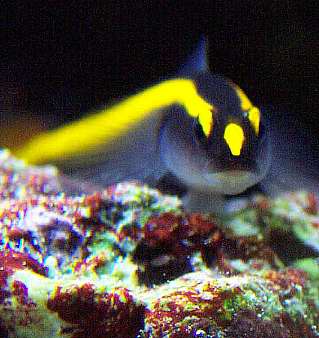
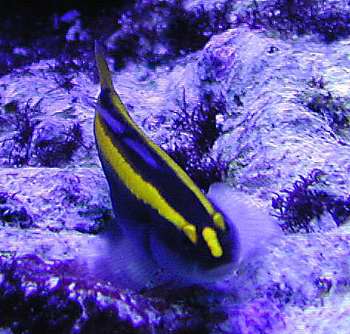
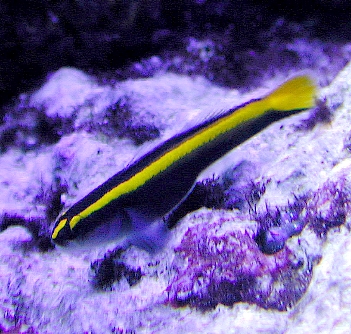
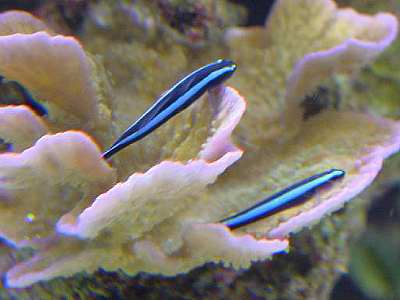
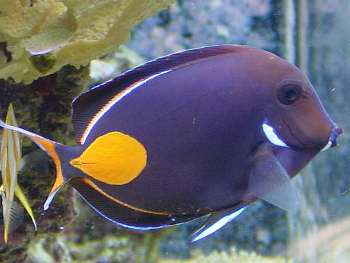
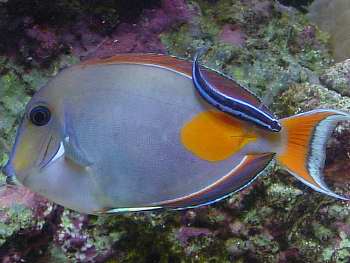
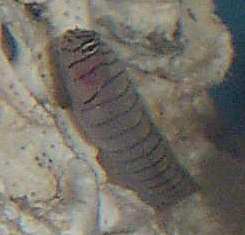
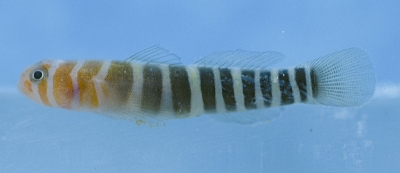
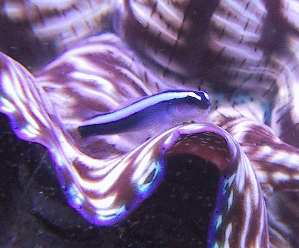
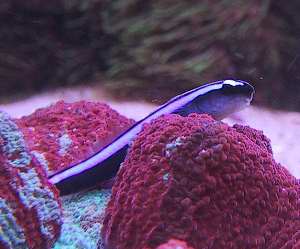
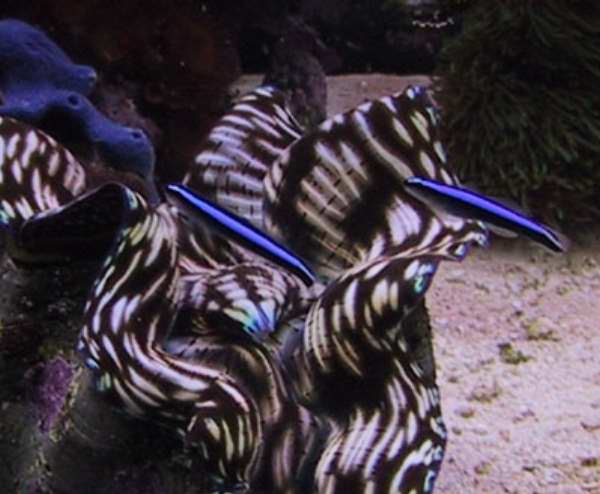
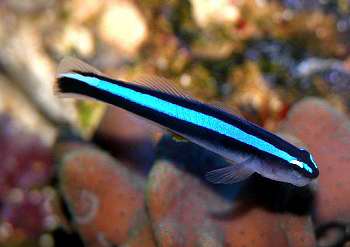
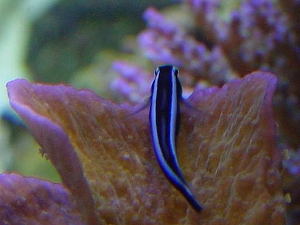
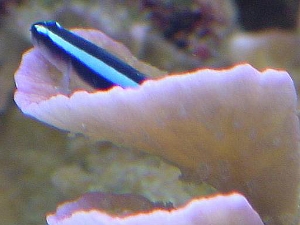
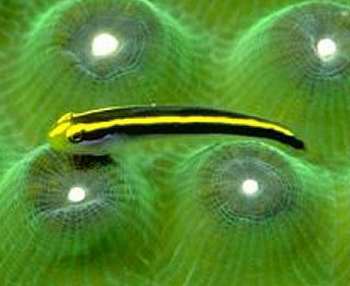
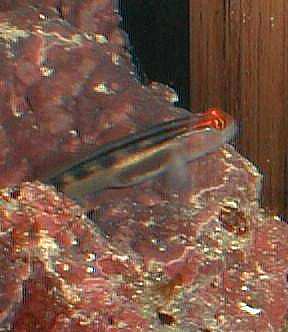






Tidak ada komentar:
Posting Komentar